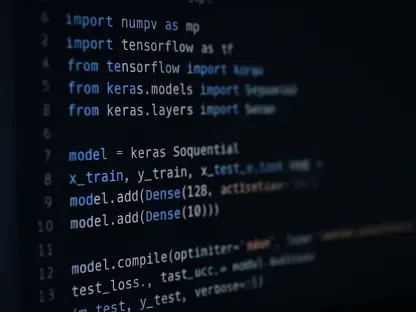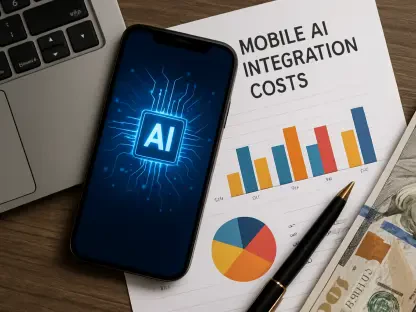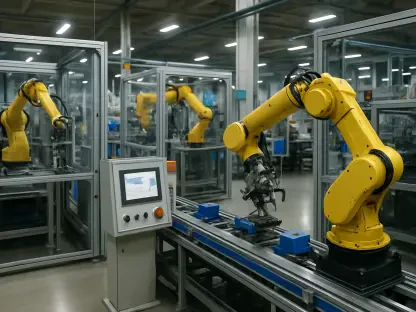In today’s interview, we have the pleasure of speaking with Anand Naidu, a seasoned development expert who is proficient in both frontend and backend technologies. Known for his deep insights into various coding languages, Anand will shed light on StarTree Inc.’s recent advancements in supporting AI workloads within its real-time analytics platform based on Apache Pinot. StarTree has made impressive moves to bolster AI capabilities through the integration of Anthropic PBC’s Model Context Protocol (MCP) and vector embedding model hosting, aiming to transform how AI interacts with data and applications. Let’s delve into this cutting-edge innovation and explore its implications for developers and industries at large.
Can you describe the significance of StarTree Inc.’s recent enhancements for AI workloads on Apache Pinot?
The recent enhancements by StarTree Inc. are pivotal in expanding the capabilities of AI workloads within Apache Pinot. By integrating support for the Model Context Protocol and vector embedding model hosting, StarTree enables AI applications to function more dynamically and connect with external data sources seamlessly. These improvements provide a robust platform for real-time data analysis and pattern matching, taking AI beyond traditional constraints and opening up new possibilities for agentic applications.
What is the Model Context Protocol (MCP), and how does it help AI applications with external data interaction?
MCP is essentially a standardized way for AI applications to access and interact with external data sources without the need for cumbersome, bespoke integration code. It serves as an API that enriches AI applications, making them more intelligent and adaptive by facilitating a smooth flow of data interactions and enhancing their built-in knowledge with fresh, contextual information. This innovation simplifies the complexities associated with data integration, enabling applications to engage with external systems efficiently.
How does vector embedding model hosting enhance machine learning models, and what types of data can it handle?
Vector embedding model hosting is a revolutionary feature that allows machine learning models to convert various multimodal data types—such as text, images, and audio—into dense numerical representations. By capturing the semantic meaning of inputs, these models facilitate advanced similarity searches and pattern matching. This capability supports applications in handling complex, unconventional data types, thus expanding their analytical range beyond simple text processing.
Can you explain how StarTree aims to support agentic AI applications with the new features?
StarTree’s recent advancements are designed to support agentic AI applications by providing them the tools to dynamically query and analyze live data from StarTree’s architecture. By leveraging MCP and vector embeddings, AI agents can make more informed decisions with real-time data, effectively communicating with databases and evolving through conversational queries. This setup—handling multiple simultaneous queries—empowers agents to autonomously engage with structured data and improve their operational efficiency.
What advantages does MCP offer compared to traditional integration methods?
Unlike traditional methods that involve extensive code for data integration, MCP provides a streamlined API approach that significantly reduces development overhead. This protocol sparingly uses custom code, allowing quicker and more efficient integration with external data tools, ultimately benefiting various stakeholders within the AI landscape by facilitating a smoother deployment and management process for AI technologies.
How does MCP improve the deployment and management of autonomous agents using StarTree’s infrastructure?
MCP enhances the deployment and management of autonomous agents by enabling them to analyze live enterprise data with greater ease and efficiency. StarTree’s infrastructure, bolstered by MCP, provides a scalable environment where agents can engage in natural language queries, simplifying the complexities of SQL commands and supporting continuous conversational interaction, which is vital for effective agent performance.
Could you elaborate on the role of vector embeddings in querying unconventional data types, and how StarTree’s new technology supports this?
Vector embeddings enable applications to query data types that are typically not suited for conventional SQL, such as images or complex text patterns. StarTree’s technology supports these embeddings by integrating models directly into the database, thus automating the reflection of the latest embeddings for real-time queries. This capability is particularly valuable for applications needing to perform similarity searches and advanced pattern recognition, making it easier to process and analyze varied data inputs effectively.
What are the scenarios or use-cases where real-time retrieval-augmented generation (RAG) can be beneficial?
Real-time RAG is beneficial in scenarios like financial market monitoring and IT infrastructure observability, where quick access to the freshest data can drive critical decision-making. By incorporating real-time data into modeling processes, applications can generate more accurate predictions and insights, such as stock price projections based on live events, enhancing both timeliness and relevance in data-driven domains.
How does the “Bring Your Own Kubernetes” deployment option differ from StarTree’s existing offerings?
The “Bring Your Own Kubernetes” deployment option provides organizations with full control over the infrastructure within their own Kubernetes environments. This contrasts with previous options that necessitate delegated cloud access, which may present privacy and operational constraints for some users. Organizations can now deploy StarTree technology on-premises, in the cloud, or within hybrid architectures, benefiting from greater autonomy and security.
For which industries is the “Bring Your Own Kubernetes” model particularly targeted, and why?
This deployment model is especially suited for regulated industries with stringent data residency, compliance, and security requirements that restrict cloud processing. It provides a secure and customizable environment where data policies are critical, while also offering a cost-effective solution for organizations with stable workloads needing precise control over computing resources.
Can you discuss how organizations with stable workloads can benefit from this deployment option economically?
Organizations with predictable workloads can gain economic benefits through reduced computing and egress fees when opting for a fully controlled Kubernetes deployment. This setup minimizes unnecessary overhead and operational costs while maximizing infrastructure efficiency, thus allowing businesses to redirect savings to other strategic initiatives while maintaining robust data analytics capabilities.
Why might some customers prefer a completely disconnected model offered by StarTree’s new deployment option?
Some customers may prefer a completely disconnected model due to increased control over data security and privacy. By eliminating the need for external cloud connections, organizations can independently manage their data planes, overcoming potential security and compliance issues while ensuring their analytics capabilities align closely with internal policies and standards.
When can developers expect the MCP support and vector embedding features to become available?
Developers can look forward to MCP support arriving in June, with vector embedding capabilities slated for release in the fall. These timelines reflect StarTree’s commitment to gradually enhancing its platform, fostering broader adoption and adaptation to these cutting-edge technologies that promise to redefine AI application development.
What is your forecast for data analytics in real-time AI applications?
Looking ahead, real-time data analytics will increasingly drive AI applications toward greater autonomy and intelligence. As technologies like StarTree’s continue to evolve, we can expect AI systems to have even more seamless integration with dynamic data sources, delivering insightful, timely, and impactful results across numerous industries. The trend toward real-time, adaptive applications will likely inspire new innovations and accelerate the transformation of traditional analytical paradigms.









